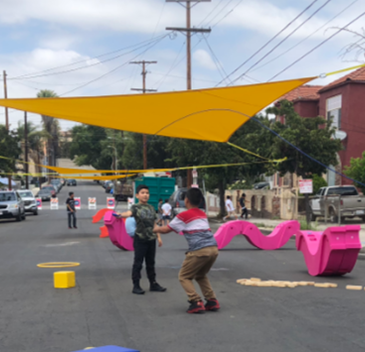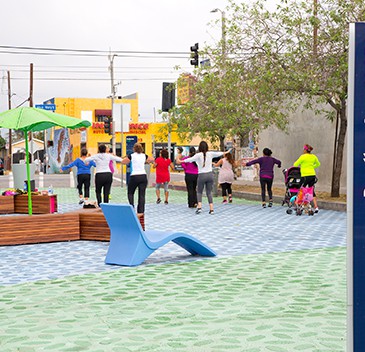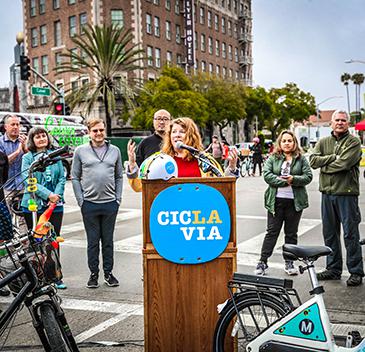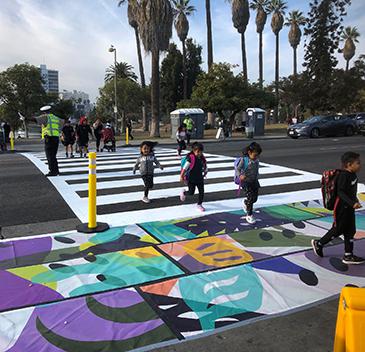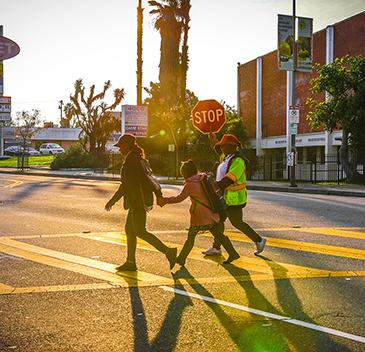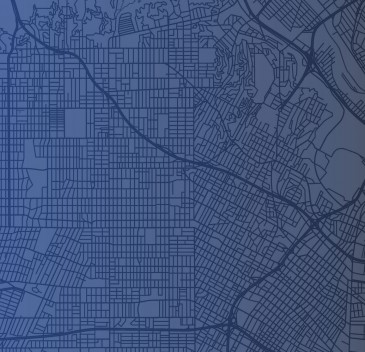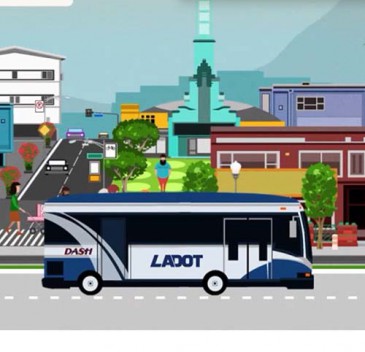Livable Streets
There are over 7,500 miles of streets in Los Angeles. Imagine the possibility of transforming some of that space into places to gather, play, and create a unique neighborhood identity. At LADOT, we have created pathways for communities to transform their streets into vibrant public spaces.
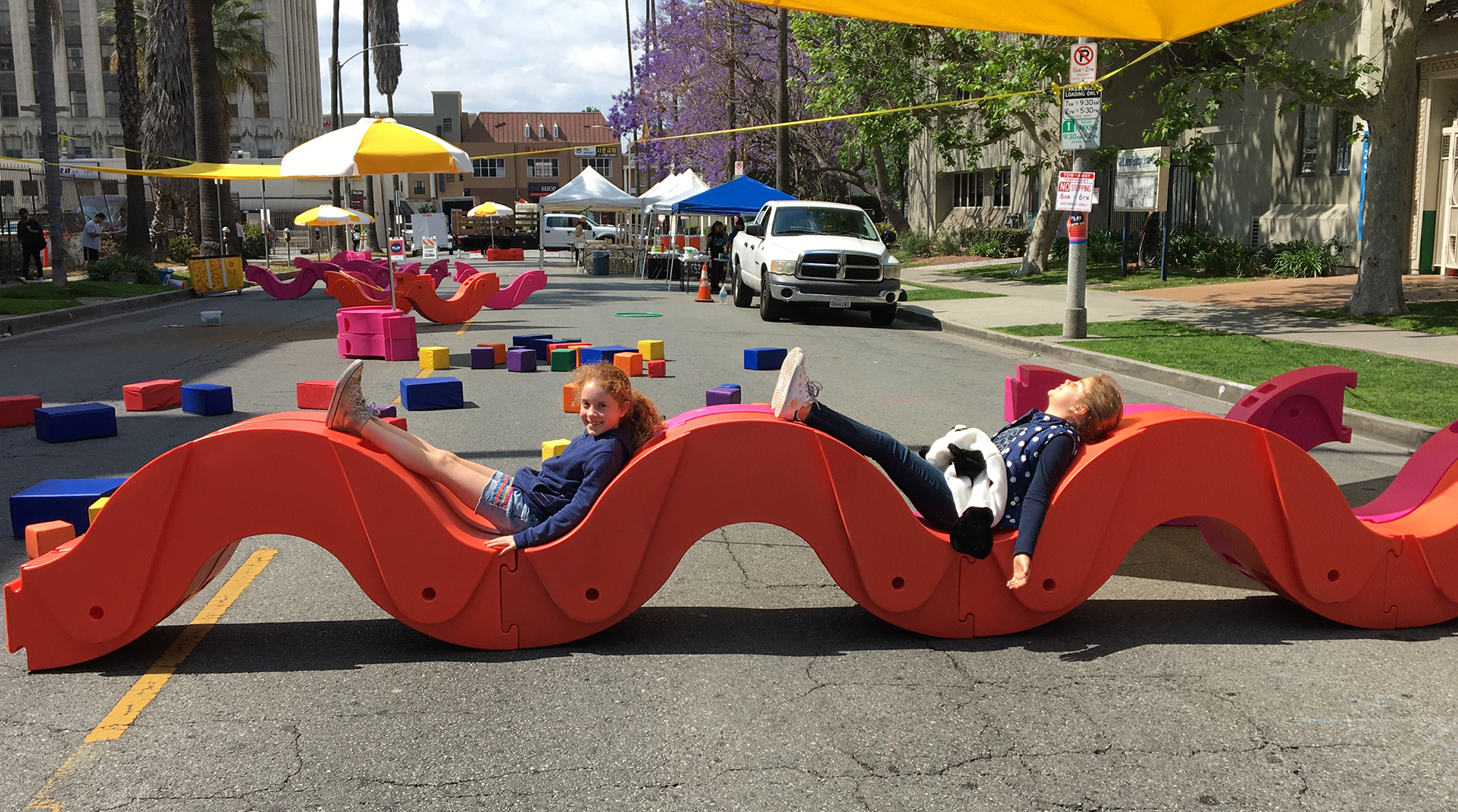
Through the Play Streets Pilot Program, residents can apply to temporarily close a neighborhood block to car traffic and transform it into a place where neighbors of all ages are free to gather and play in their favorite ways. The Play Streets Pilot Program is community driven, allowing residents the opportunity to choose how streets can be used as public spaces-- temporarily, periodically, or permanently.
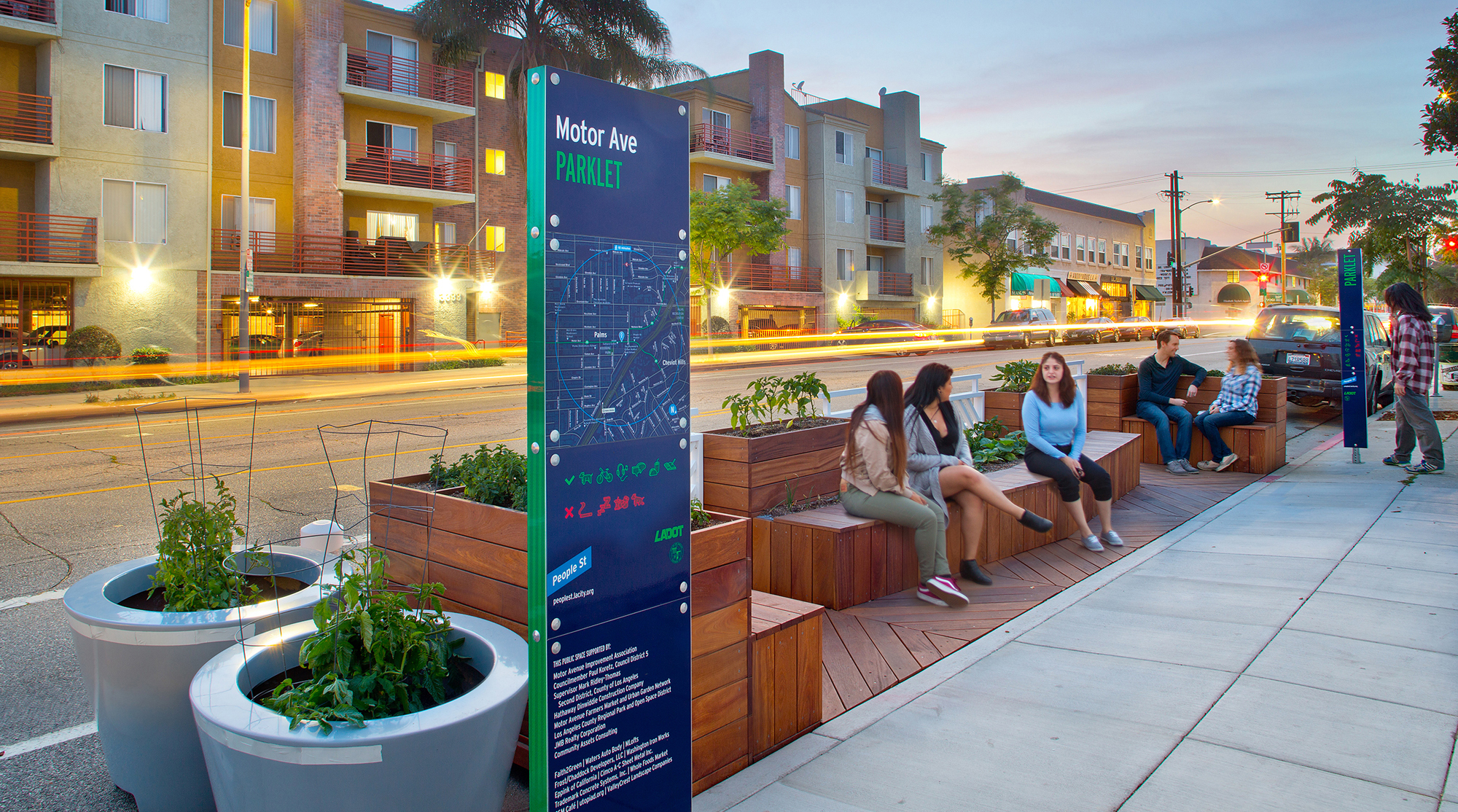
People St is the one-stop shop for transforming L.A.’s largest public asset—our 7,500 miles of city streets—into active, accessible spaces for people.
People St is a community-driven LADOT program that installs low cost, semi-permanent projects -- parklets, plazas, colorful intersections, and expanded bike parking -- to improve neighborhood safety and transform streets into vibrant public spaces.
Eligible community partners can apply for approval to create projects that enhance the quality of life in our city. These projects may be completed in months, not years, for relatively low costs. Over the last 6 years, LADOT has helped neighborhoods with a People St project attract investment in permanent infrastructure and foster lasting neighborhood vitality.
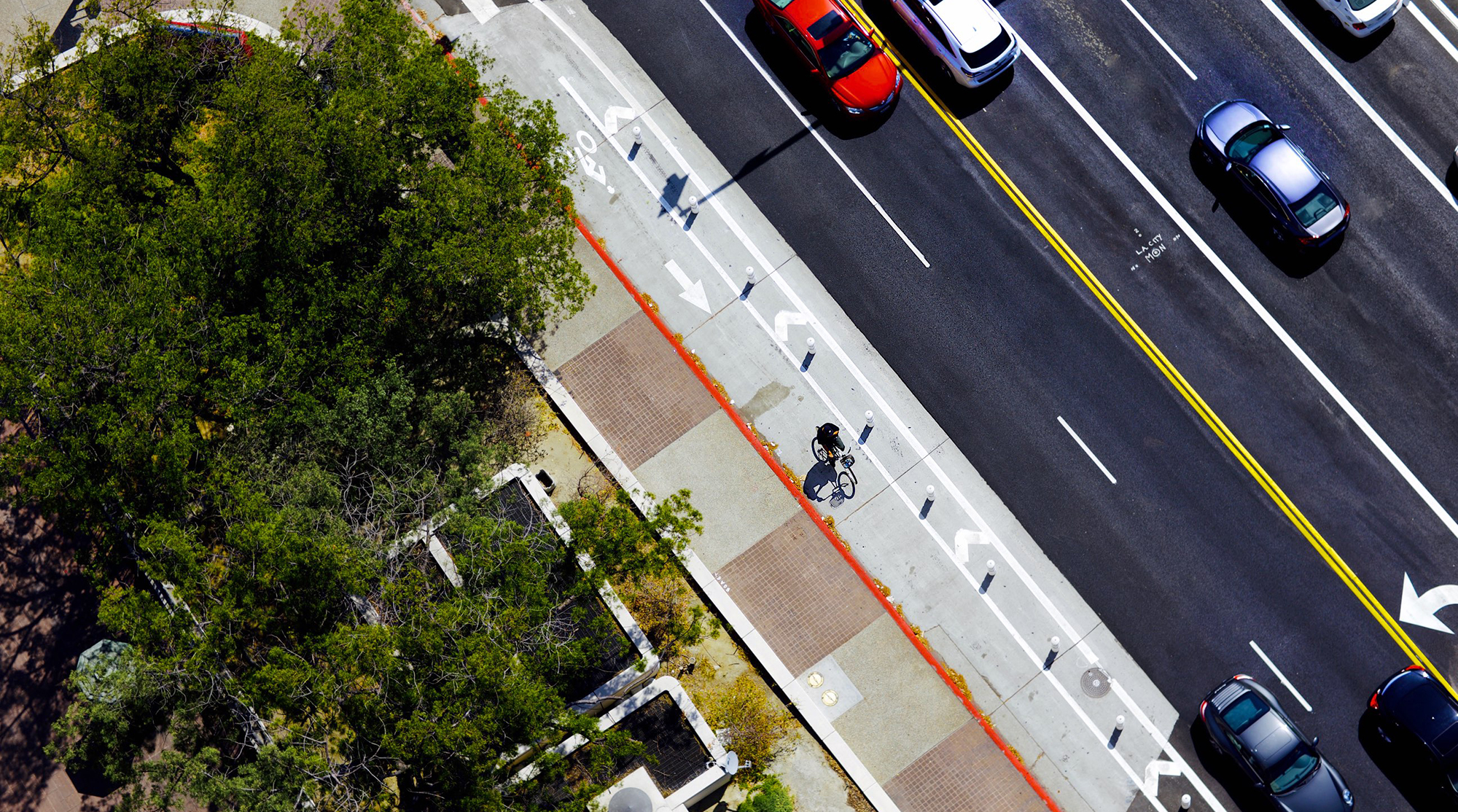
Bicycling is good for your health, the environment, and your wallet. LADOT is making bicycling safer and more comfortable for all by building better bike lanes, increasing safe bike parking and repair stations, and creating the world’s largest scooter and bike share program. Learn more about the ways we support bicycling in LA below.
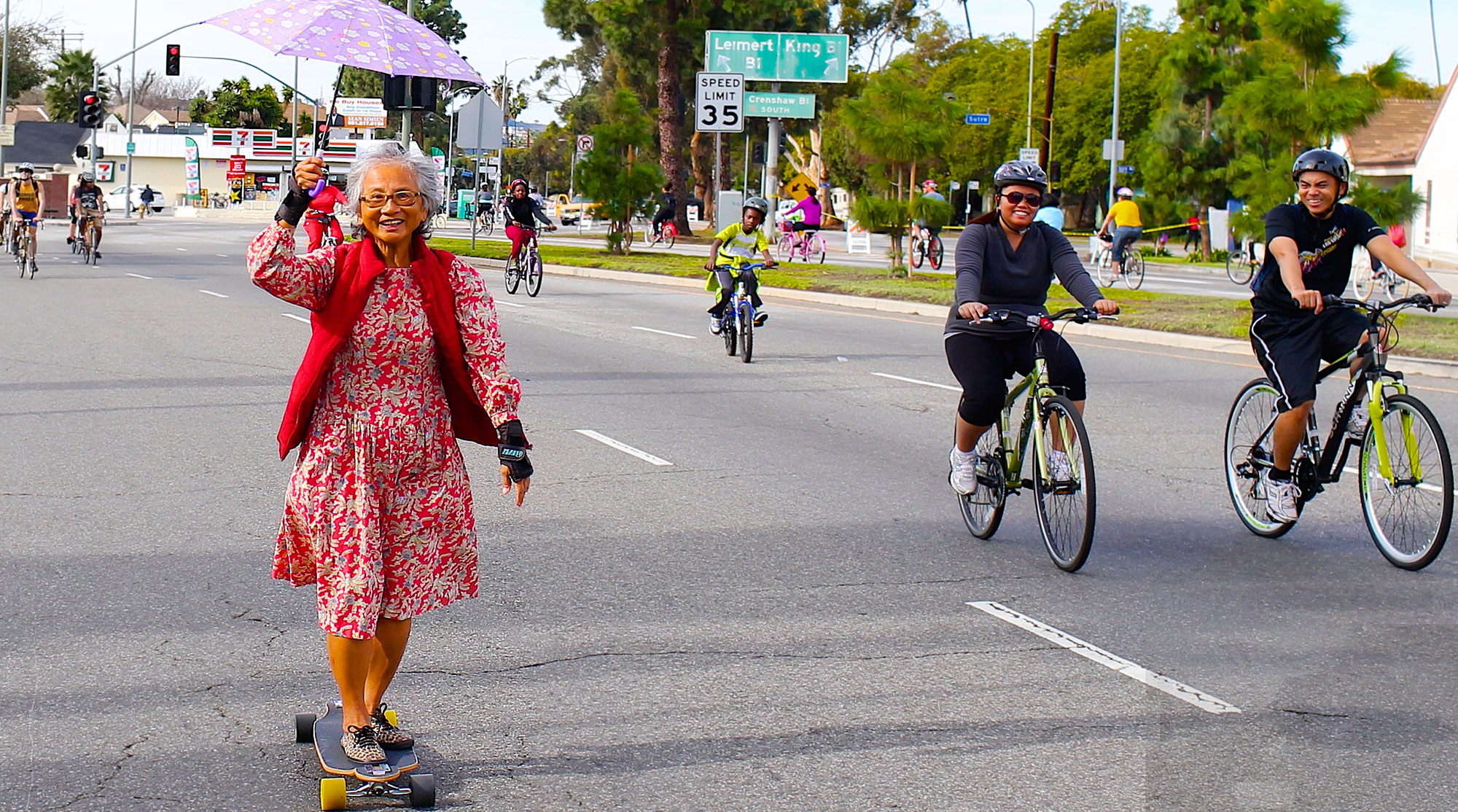
In partnership with CicLAvia, LADOT's Open Streets Program invites you to celebrate our streets as public spaces for everyone. Several times a year, LADOT partners with CicLAvia to temporarily transform the city's most iconic and beloved streets into car-free places to walk, bike, skate, roll, and dance. Each free event brings together Angelenos and visitors to explore the city's great neighborhoods and reimagine the street as a social space. Opening our streets to community celebration promotes active mobility, health, economic vitality, and a more vibrant public life. Free for all, these events connect communities across our expansive city and create a safe place to play through the streets of Los Angeles.
Apply to be a volunteer or learn more about upcoming events below
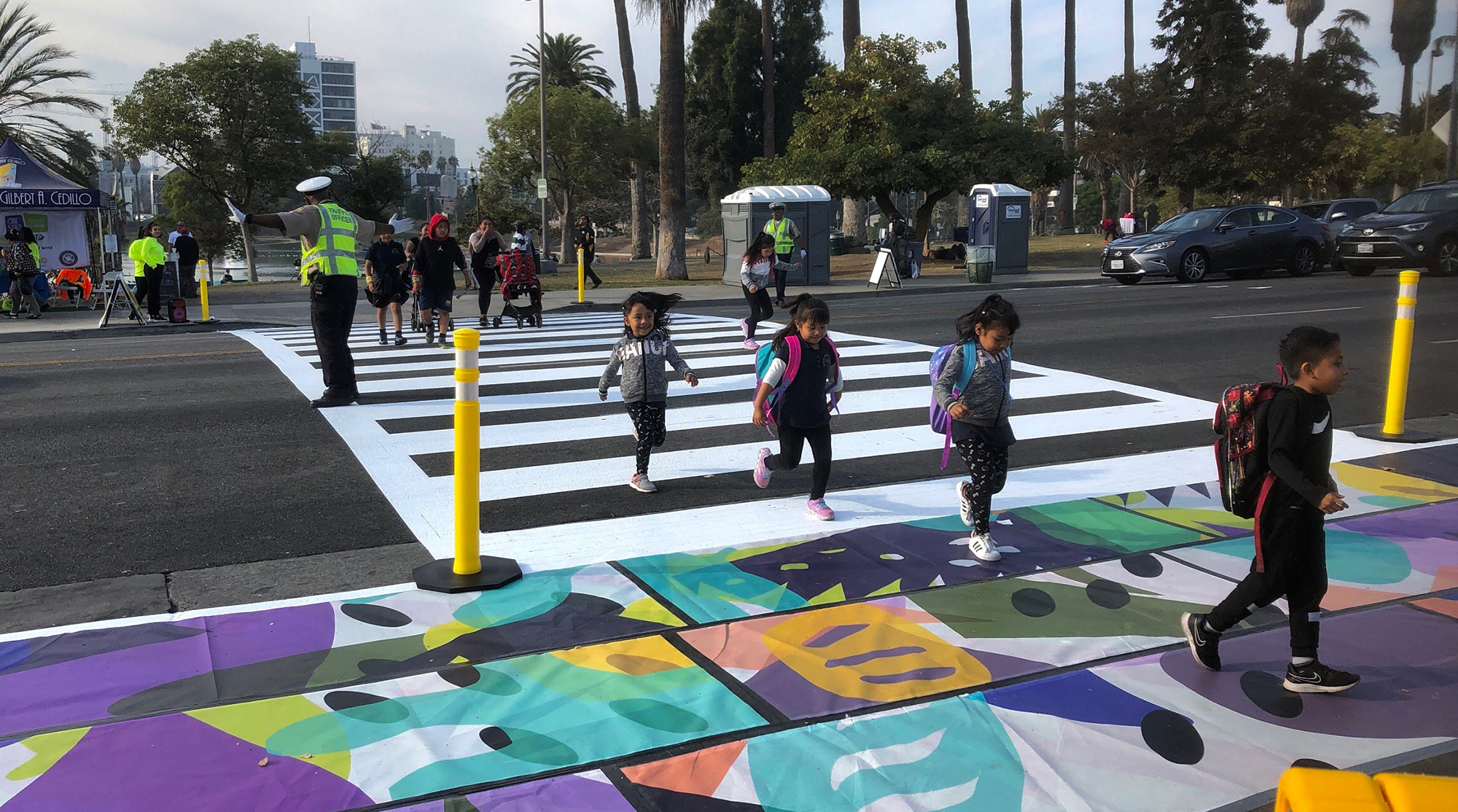
In Los Angeles, streets are our largest public asset - covering over 18% of our city. They are also the centerpieces of our neighborhoods—places where we live, work, learn, and play every day. They reflect the character of our people and of our city. This is why Mayor Eric Garcetti started the Great Streets Initiative: to serve, support, and strengthen the vibrant corridors that are the backbone of Los Angeles. Great Streets is an interdepartmental effort led by Mayor Garcetti’s Office. LADOT supports the program with safety improvements that make streets more walkable and comfortable for all.
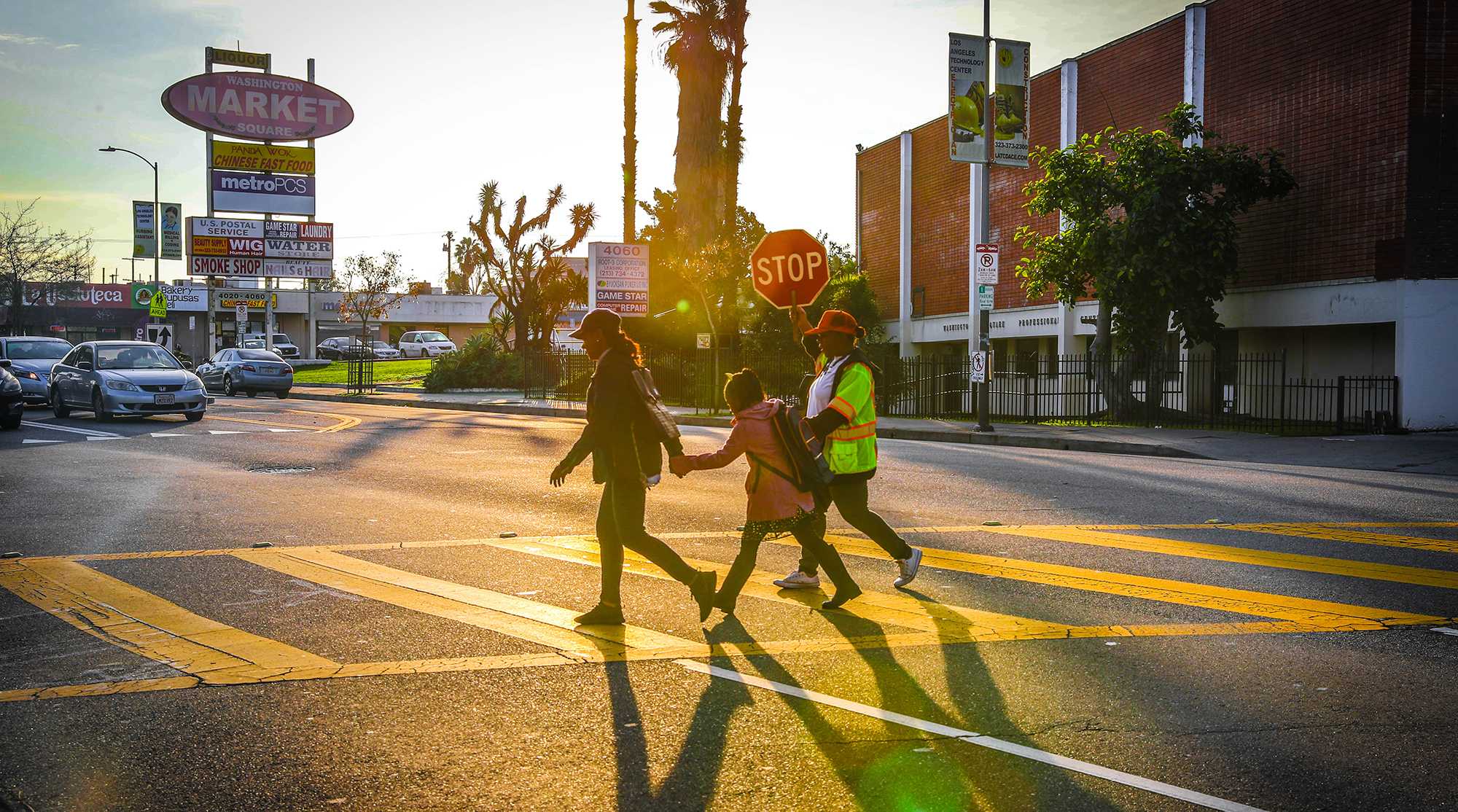
In Los Angeles, transportation accounts for 19% of our greenhouse gas emissions and is a top contributor to air pollution. We can do better. Through the Green New Deal, we’re investing in public transit, testing new technology, and adopting mobility innovations for a cleaner environment and brighter future. Our future is one where all people can walk, scoot, bike, rideshare, and take public transit with ease. Our future is a city whose transportation system is as dynamic as its people.
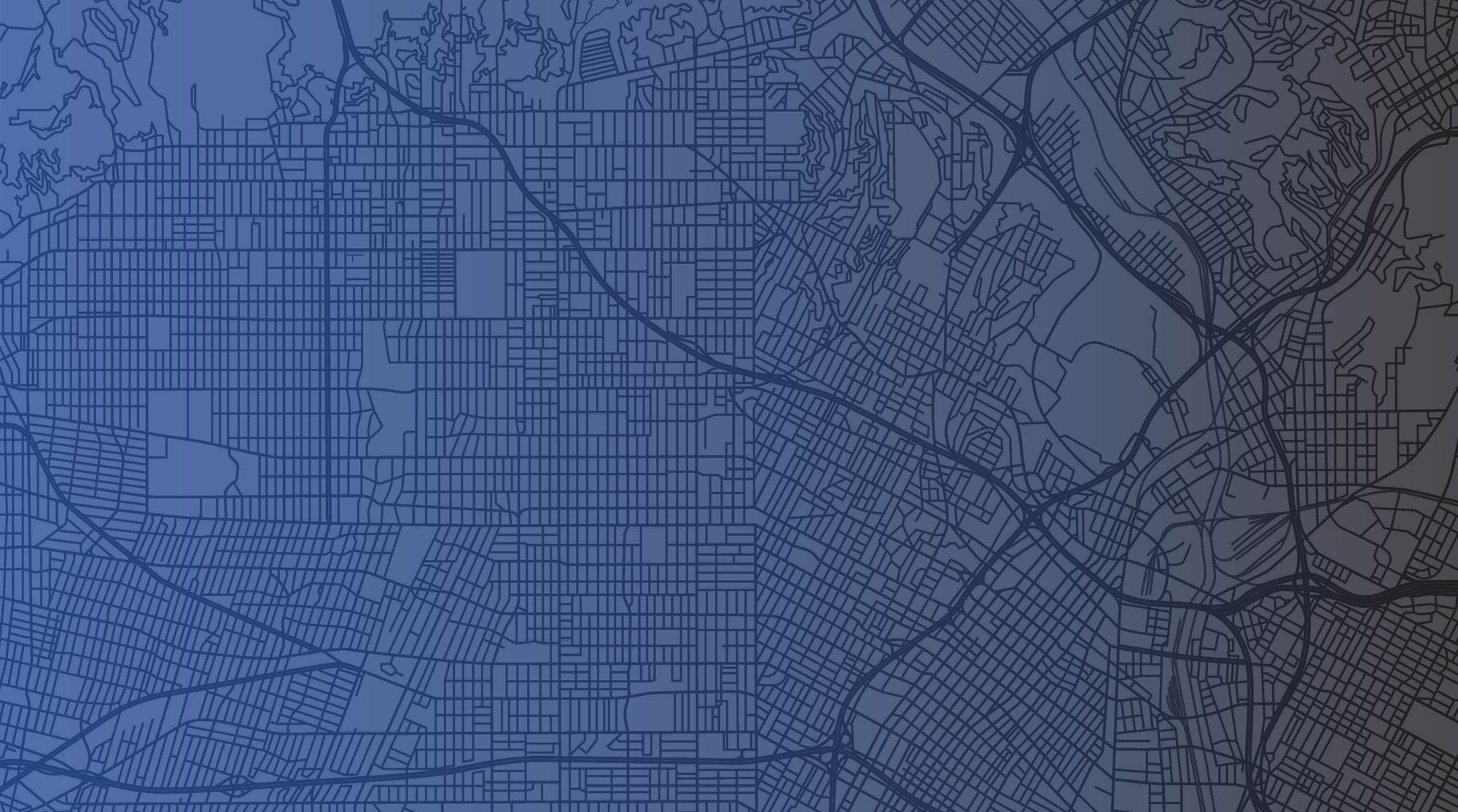
LADOT develops transportation plans and programs that advance sustainable mobility in the City. LADOT actively plans mobility investments and reviews development projects to determine the best outcomes for the City of LA. Additionally, LADOT contributes to state, regional, and local transportation planning efforts, led by Caltrans, SCAG, and Metro, to address mobility investments, transit station connectivity, goods movement, high-speed rail, sustainability, congestion management, and reviews environmental documents for land use and transportation infrastructure projects.


